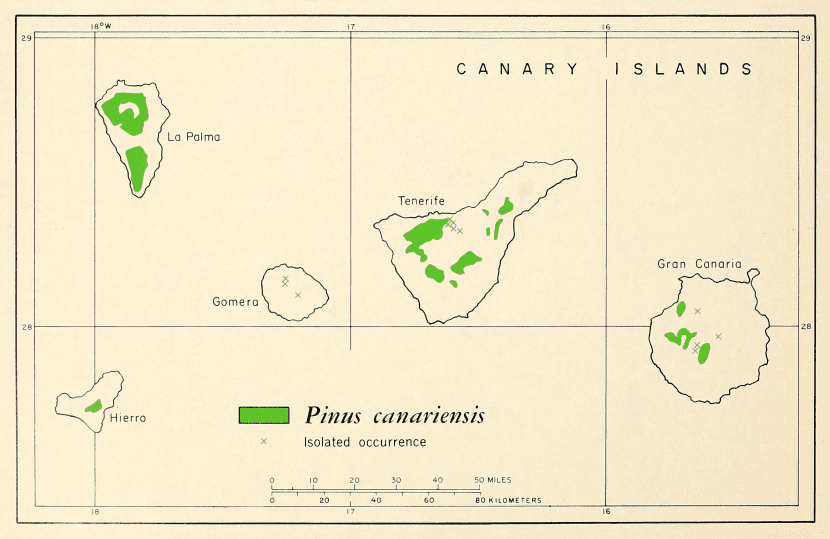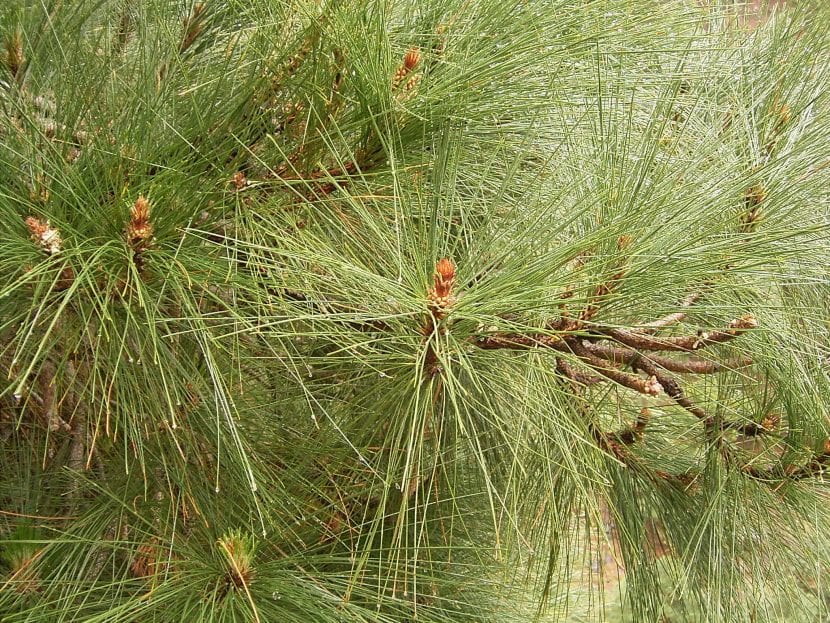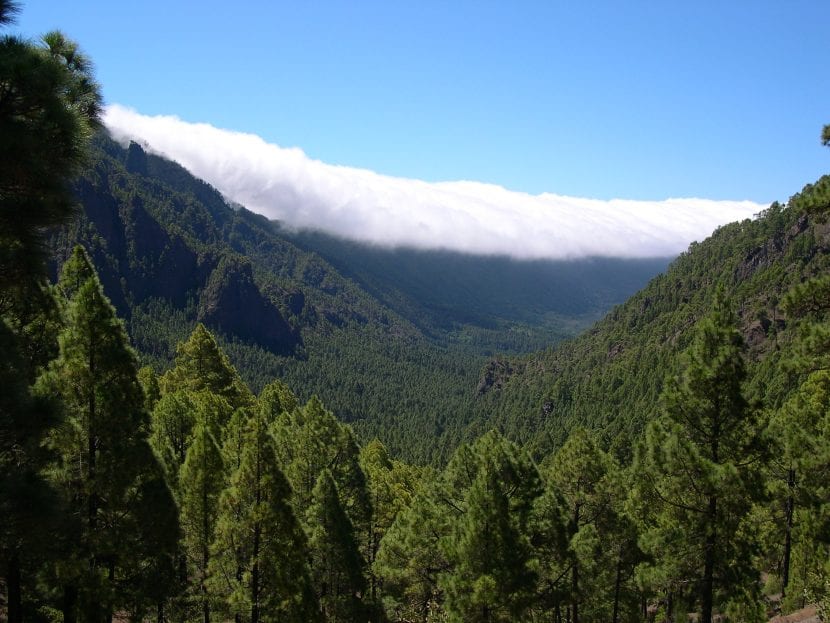
El canary pine it is one of the few autochthonous pines found in Spain. This precious conifer is endemic to the Canary Islands, where it has become a natural symbol of the island of La Palma.
It is a very interesting plant to have in the gardens: its rapid growth and easy cultivation make it an ideal species to have as an isolated specimen or even a high protection hedge.
Characteristics of the Canary pine

Our protagonist, whose scientific name is Pinus canariensis, is a conifer that grows naturally on all the islands of the Canary archipelago, especially on Tenerife and La Palma. It is a plant that can easily exceed 40 meters, reaching 60m, with a trunk diameter of up to 2,5m. The bark when young is light brown in color, but as it ages it turns dark brown.
During the first years of its life it acquires a pyramidal shape rapidly, but with the passage of time his glass becomes overwhelming, with green needles (leaves) that are grouped in groups of three per pod. These have a length of 20 to 30cm and a thickness of 1mm.
Flowers from March to May (in the northern hemisphere). One specimen has male and female cone-shaped inflorescences on the same plant but separated into different shoots. The males are 5-10cm long and are yellow-green in color, while the females are 12-18cm long and are reddish-brown in color. Once they are pollinated, the pine nuts will begin to form, finishing their development after two or two and a half years.
As a curiosity, it is important to add that it is very resistant to fire.
How is it grown?

If you want to have a Canarian pine in your garden, then we tell you what care it requires:
Location
It must be in a large garden, exposed directly to direct sun and at a minimum distance of ten meters from any construction, pipes and, ultimately, anything that could damage. The roots of the pines are very invasive, so it is always better to put it in an area where it will not cause problems in the future.
Land
So that I can prosper well the soil must be slightly acidic. Unfortunately limestone soil does not resist well, requiring regular contributions of sulfated iron to avoid chlorosis and subsequent weakening.
Irrigation
Resists drought well; Nevertheless, it is highly recommended to water it two or three times a week in summer, and every three or four days the rest of the year so that it can grow and develop without having any inconvenience caused by lack of water.
Planting time
The best time to plant it in the ground is in spring, when the risk of frost has passed and temperatures, both minimum and maximum, have begun to rise progressively.
It is highly advisable to make a 1m x 1m hole so that the roots meet loose soil. This will help it to root much better, so that its growth will resume much earlier than expected.
Subscriber
Although it is a very resistant species, it is advisable to pay it from time to time, especially if the soil we have in the garden is slightly alkaline (pH close to 7). Thus, during spring and summer you can make a monthly contribution of organic fertilizer (worm humus, horse or chicken manure).
Multiplication
To get new specimens you have to acquire the seeds and sow them in a tupperware with vermiculite in the fridge for two to three months. Once a week it will be necessary to open the lid so that the air is renewed and thus prevent the proliferation of fungi.
After that time, They can be sown in forest seedling trays, deep pots, or milk containers, having made a hole for drainage beforehand with a very porous substrate, like black peat mixed with perlite in equal parts.
Rusticity
Supports up to -12ºC.
Canarian pine uses

This beautiful conifer it is used above all to reforest. It grows well in soils with little organic matter, even if they are rocky. It has a very fast growth rate, and it also resists fire much better than other species.
Timber extracted from young pines, used to repopulate, It is often used from time to time to build doors, windows, chests for topa, barrels for wine and other minor works.
It also has a medicinal use. It is used to treat respiratory diseases such as bronchitis or asthma. The application of the resin in the cysts serves to eliminate them.
Of course, can be planted in gardens, where it will look great both as an isolated specimen and in tall hedges. The only thing to keep in mind is that it is a plant that grows quickly, and that it has to be planted away from any construction to avoid problems.

And with this we end the special on the Canary Island pine. What do you think? 🙂
Thank you!
Your article seems good to me, I hope that after reading now I know everything that I must observe when I go to transplant my Gran Canaria pine seedlings.
Thanks to his work and a very large field to practice Canarian gardening, he spent a happy forty years!
Best regards and are in good health!
(Please forgive my mistakes - I'm German and I still need more to practice Spanish ;-))
Karin
Hi Karin.
Thanks for your comment. We hope you enjoy growing this pine tree, and other plants 🙂
If you have any questions, you already know where to find us.
By the way, your Spanish is pretty good.
Greetings.